A typical day on Kilimanjaro will vary depending on which day of the climb you are on and which route you are taking. But, here’s a general overview of what most days on Kilimanjaro might look like:
Wake up
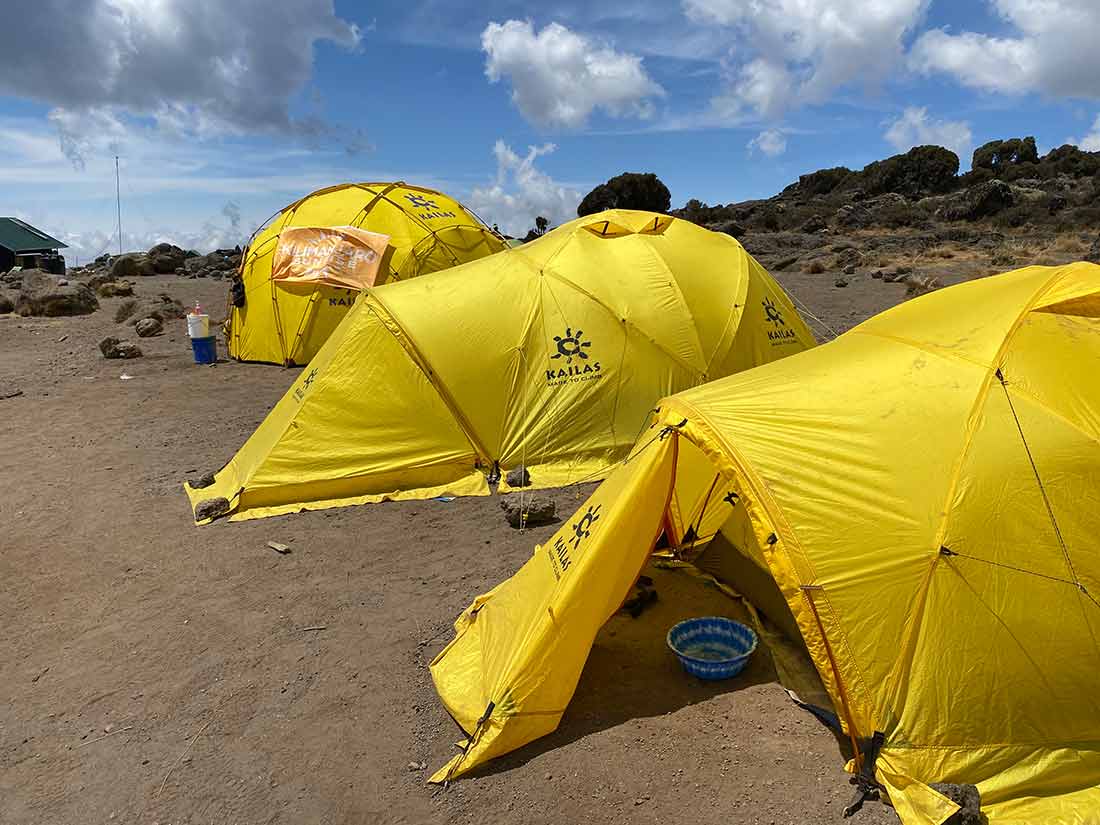
Each day on the mountain starts with a friendly wake-up from your “waiter porter” around 6:30 AM. If requested, he will bring coffee or tea to your tent. A porter will place a bowl of warm water outside your tent for washing up.
After dressing and packing up, you’ll join the group in the dining tent. During this time, the porter will dismantle your tent, grab your duffel bag, and move on to the next campsite.
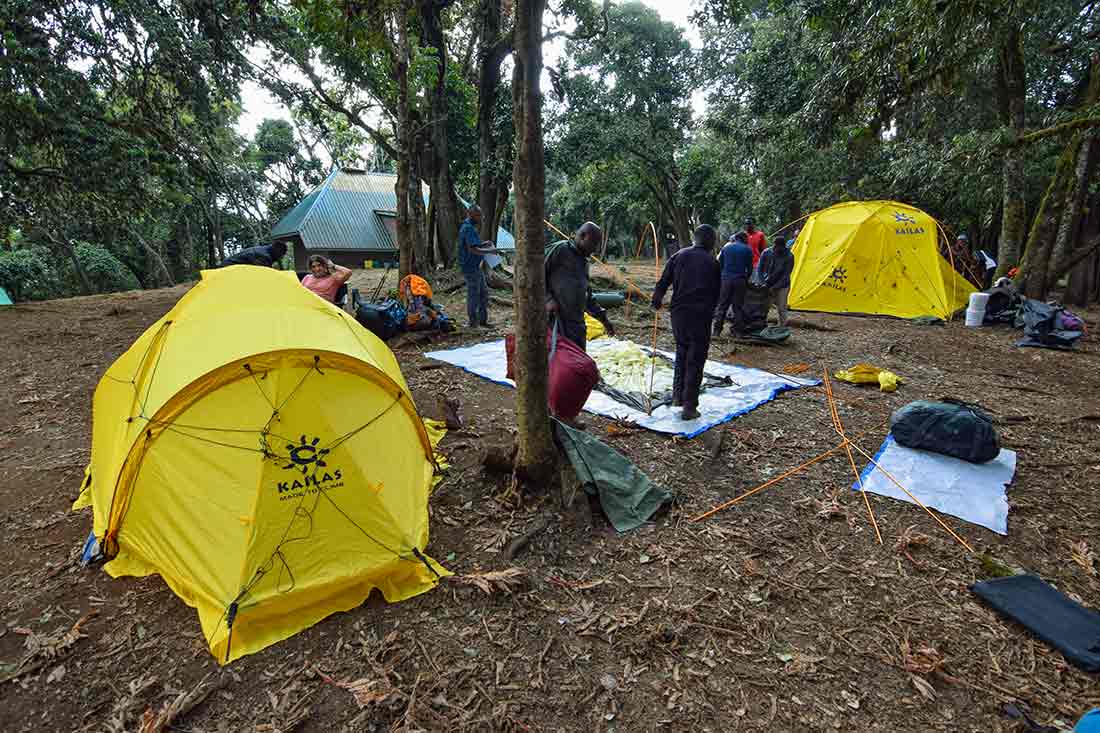
We have a porter whose job is to run ahead of everyone to secure the best camping sites.
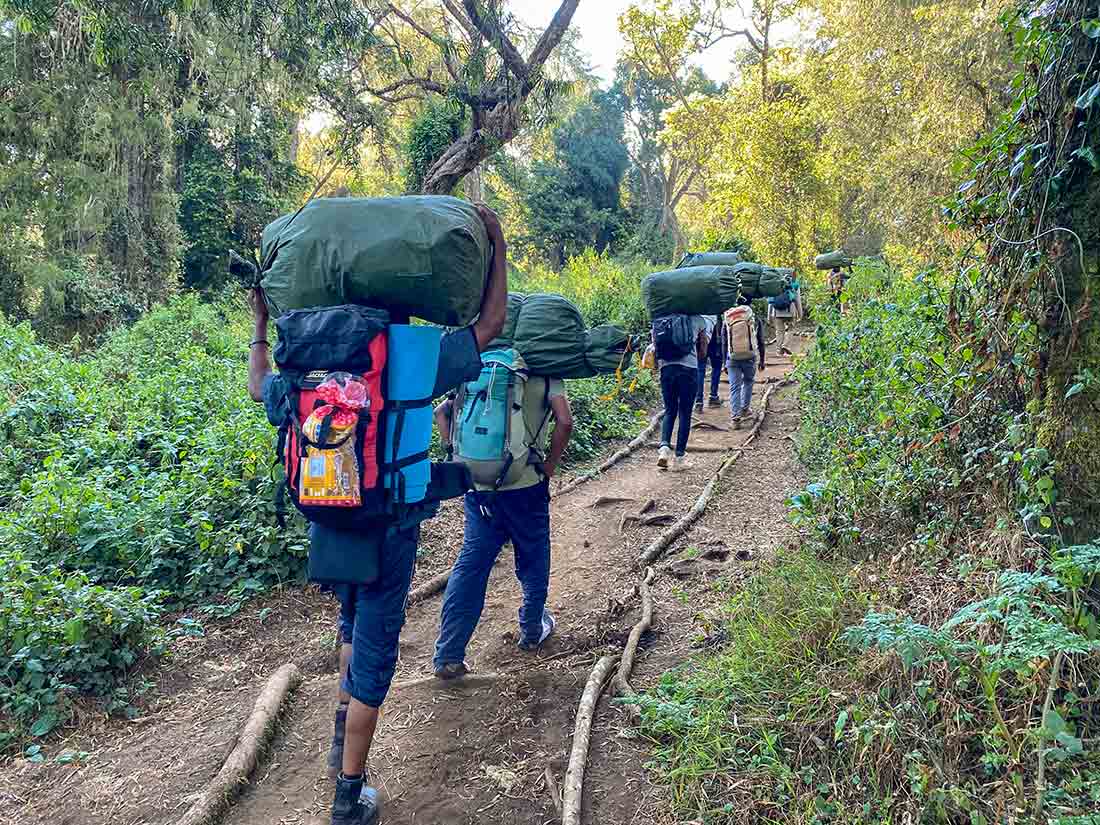
During breakfast, a porter will fill your water bladder. Once you use the bathroom, you’ll start hiking, usually around 8:00 AM.
Hiking
Our guides intentionally keep a slow pace, allowing your body to adjust to the extreme elevation gain. You may need a few days to adapt to this pace. If you try to go too fast, the guides will remind you to slow down, saying “pole, pole,” which means “slowly, slowly” in Swahili.
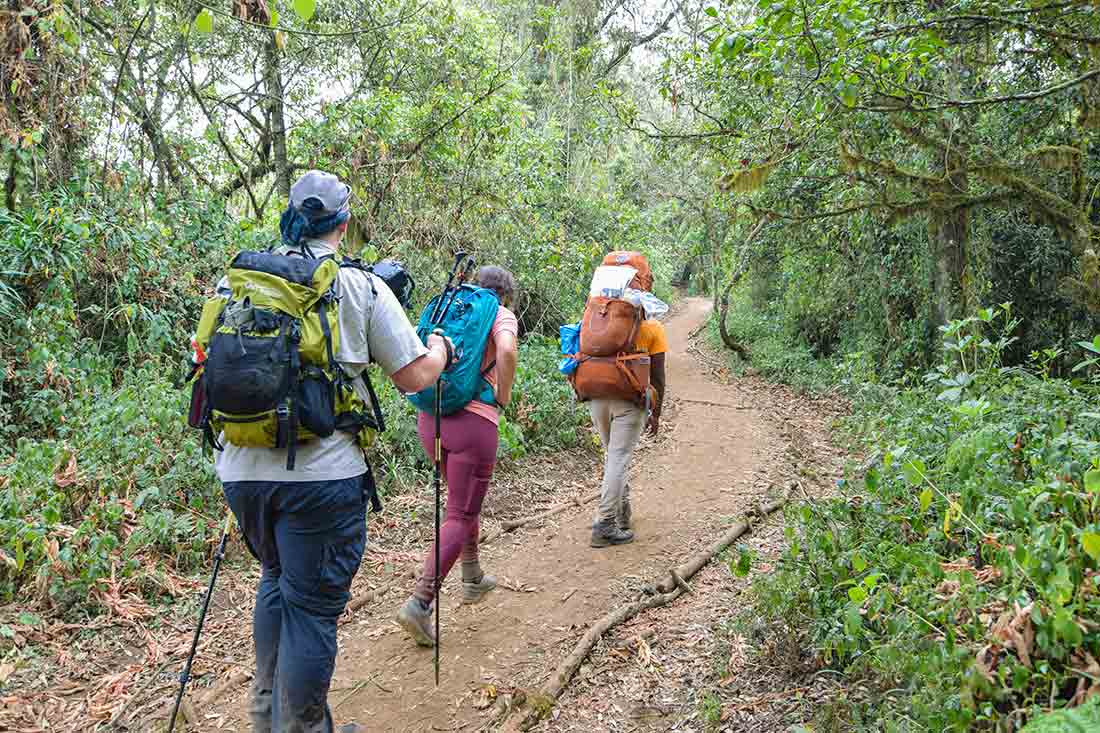
During the hike, you will pause briefly to snack, hydrate, adjust clothing layers, and use the bathroom. Please be aware that no restrooms are along the trail, so carry toilet paper or wipes. Our guides are attentive to your well-being, monitoring your ability to adapt to the altitude. Generally, you’ll arrive at the campsite in the early afternoon.
The daily hikes are relatively easy for experienced hikers. The trails are generally level and maintained by park personnel. These short hiking days aim to allow your body the most time possible to acclimate to the altitude.
No technical skills are necessary for hiking Kilimanjaro, although a few sections may appear intimidating. Follow the guide’s instructions and you’ll be safe. Someone will be with you at all times. There’s no possibility of becoming lost or left behind.
At Camp
Upon arriving at camp, you’ll find food and hot water ready for you. You can make tea, coffee, or hot chocolate. Your tent will be set up, and if you’ve rented one, the private toilet tent will be ready as well.
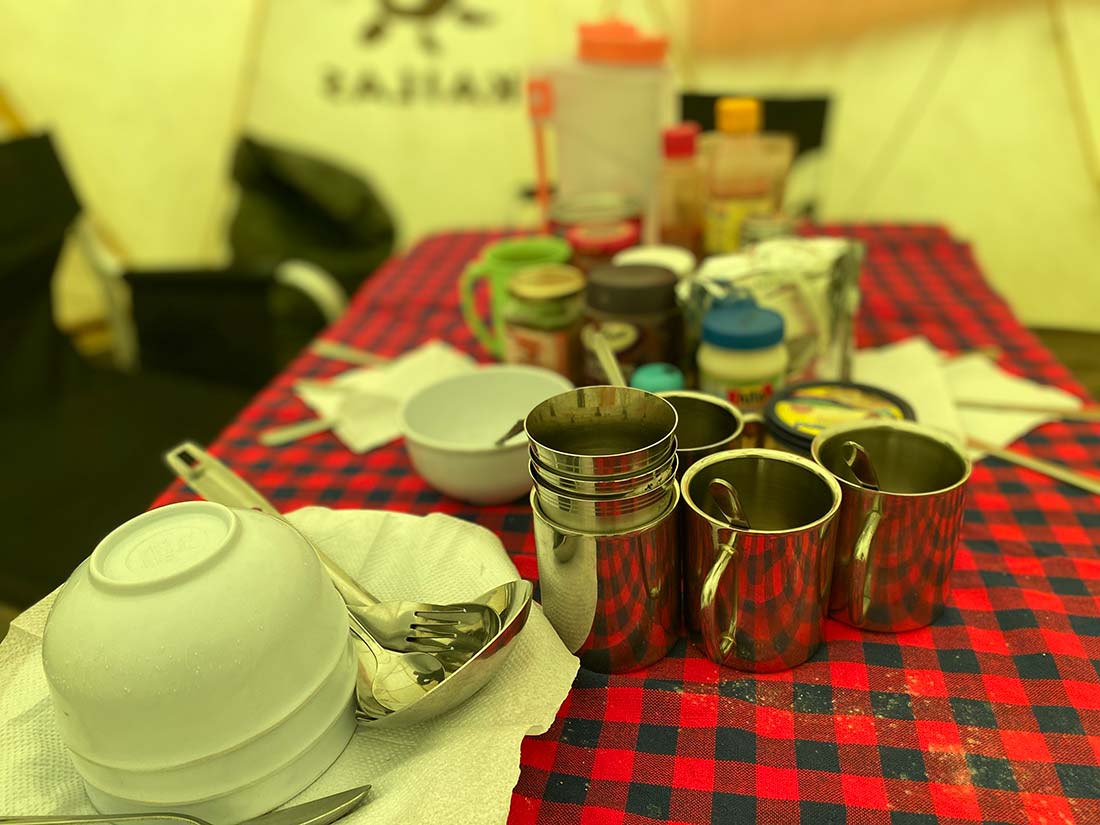
We recommend bringing camp slippers, fleece pants, and a fleece pullover to wear at camp. Spend the downtime resting, snacking, and relaxing. Use this time to recover from the day and to prepare for the next day. Takes plenty of pictures and videos.
If the weather is bad—cold, windy, or rainy, hang out in the dining tent or your tent to escape the elements.
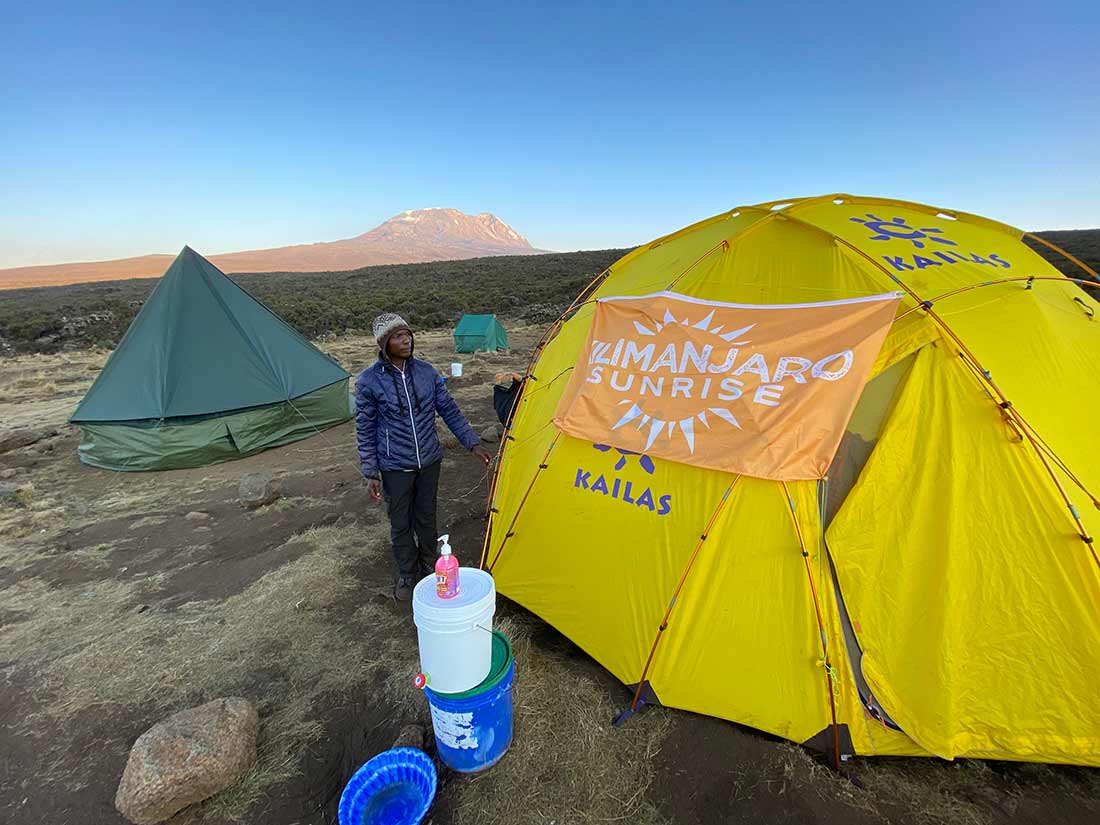
Before dinner, a bowl of warm water will be available for washing up. After dinner, the guide will perform a health check, monitoring your vitals and recording them. If you experience any issues like headaches, blisters, diarrhea, etc., it is essential to communicate with the guide. After the health check, the guide will review the following day’s schedule and advise on how much water to bring.
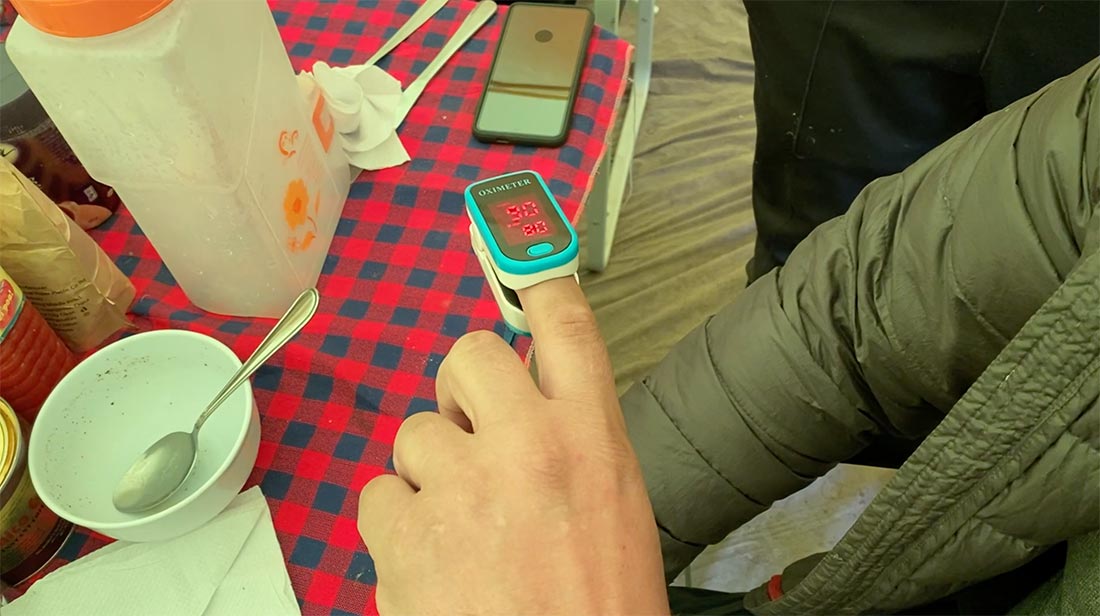
You’re then free to relax until bedtime, usually around 8 to 9 PM.
Final Thoughts
While the preceding description outlines a typical day on Kilimanjaro, it’s important to note that the mountain’s considerable height can generate its own weather patterns. Consequently, it’s crucial to be thoroughly prepared for any type of weather. Layered clothing is essential, as you can easily add or remove items in response to changing conditions. For example, bundle up in a rain jacket if it starts to rain or becomes excessively windy. As previously mentioned, it’s also recommended to bring warm clothing to wear around camp that is wind, rain, snow, and cold-resistant. Adequate preparation will ensure a memorable and enjoyable experience rather than a miserable one. Our goal is for your trip to be one filled with happiness and awe, rather than disappointment.



